Ohhh Barcelona… my hometown and the vibrant capital of Catalonia, is a treasure of unforgettable places to visit. This Mediterranean jewel offers an intoxicating blend of Gothic romance and modernist vibe, with iconic attractions that captivate visitors from all around the globe. From the stunning creations of Antoni Gaudí to the bustling energy of the old city center, the places to visit in Barcelona promise a feast for the senses.
Embark on a journey through time as you explore the alleys of the Gothic Quarter, or fast-forward to the future with a visit to the cutting-edge designs of the Sagrada Família. Beach lovers will find paradise at Barceloneta, while art enthusiasts can lose themselves in world-class museums like the Picasso Museum and MACBA. With each neighborhood offering its own unique charm, the places to visit in Barcelona cater to every interest and passion.
The places to visit in Barcelona await, each one a chapter in the city’s unforgettable story.
Planning Your Trip in Barcelona
When to Come
Summer (mid-June to August). Can be hot and crowded, with temperatures often exceeding 30°C (86°F). However, this season offers vibrant beach life and outdoor festivals.
Autumn (September to November) Comfortable climate with temperatures between 20-25°C (68-77°F). The crowds thin out, making it an ideal time to visit popular attractions.
Winter (December to March). Milder temperatures around 10-15°C (50-59°F) and fewer tourists. The city sparkles with holiday decorations in December
Spring (March to mid-June) Pleasant weather with temperatures ranging from 15-20°C (59-68°F). The city comes alive with blooming flowers and outdoor events. It’s a great time to explore the parks and enjoy the mild climate before the summer heat sets in.
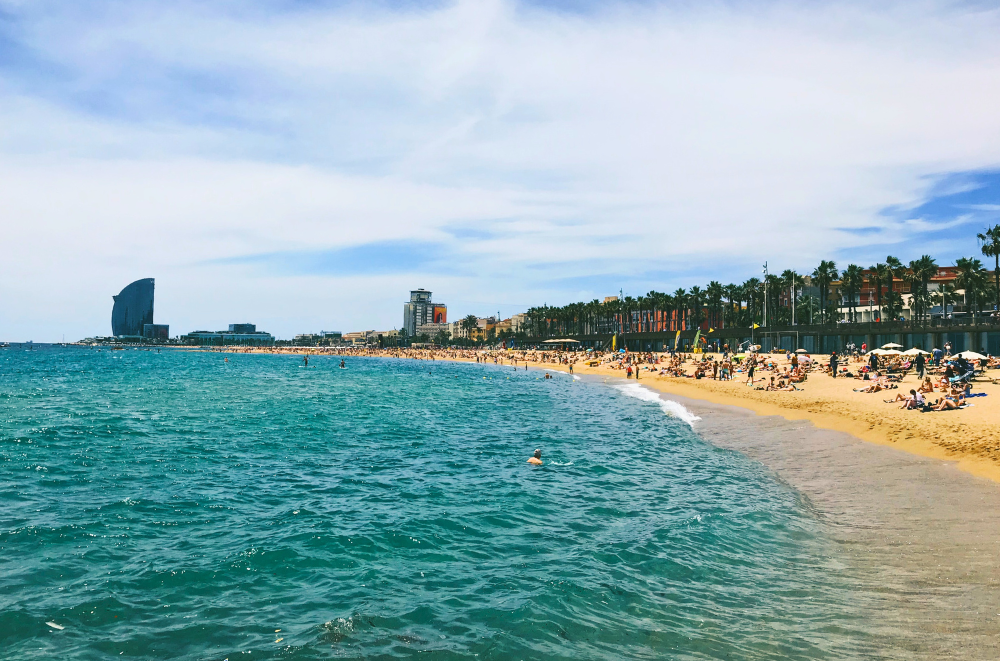
Getting Around
Arriving
Barcelona-El Prat Airport is well-connected to the city center, There are several good ways to reach the city:
Aerobus – This bus offers direct service to Plaça Catalunya, departing every 5-10 minutes with a journey time of 35 minutes. Tickets cost €9.75 one way and €14.65 for a return
RENFE train (R2 Nord line) runs every 30 minutes, taking about 25 minutes to reach Passeig de Gràcia station. A single ticket costs €4.90
Taxis and ride-sharing services are also readily available. The average cost for a taxi from Barcelona-El Prat Airport to the city center is around €25-€30. Keep in mind there is a €4.50 surcharge for trips to and from the airport. ride-sharing services
High-speed AVE trains connect Barcelona Sants station to major Spanish cities like Madrid (2.5 hours), Seville (5.5 hours), and Valencia (3 hours). International trains from France also arrive at Barcelona Sants.
Traveling Within the City
Barcelona has an efficient and comprehensive public transportation system that makes exploring the city a breeze. Here’s everything you need to know to navigate like a local:
Metro
- Operating hours: 5:00 AM to midnight (Sun-Thu), until 2:00 AM (Fri), and all night on Saturdays
- Frequency: Every 2-3 minutes during peak hours, 5-10 minutes off-peak
- Single journey ticket: €2.40
Bus & Tram
- Night buses (Nitbus) operate from 10:00 PM to 6:00 AM
- Single journey ticket: €2.40 (valid for 75 minutes, including transfers)
FGC (Ferrocarrils de la Generalitat de Catalunya):
- Local train service complementing the metro
- Useful for reaching attractions like Tibidabo
- Fares integrated with metro and bus system
Travel Cards in Barcelona
Barcelona offers a range of travel cards for convenient and cost-effective use of public transportation. A travel card allows you to check out the best places to visit in Barcelona with no hassle. Options are available for different durations, from single-day to multi-day passes.
Hola Barcelona Travel Card
- Unlimited journeys on public transport
- Includes airport metro and train
- 48h: €16.30, 72h: €23.70, 96h: €30.80, 120h: €37.90
T-casual
- 10 single journeys on all public transport (except airport metro)
- Valid for 1 year
- Price: €11.35 (1 zone, covering most of Barcelona)
T-familiar
- 8 journeys that can be shared between multiple people
- Valid for 30 days
- Price: €10.00 (1 zone)
T-dia
- Unlimited journeys for 24 hours
- Price: €10.50 (1 zone)
Bicycle
- Extensive network of bike lanes
- Bicing: Public bike-sharing system (only for residents)
- Numerous bike rental shops for tourists (€10-15 per day)

Taxi
- Black and yellow taxis are readily available
- Base fare: €2.25
- Per km charge: €1.18 (day), €1.42 (night)
Montjuïc Cable Car:
- Connects Montjuïc Castle with the city
- Single journey: €14.00, Return: €21.00
Port Cable Car:
- Connects Barceloneta beach to Montjuïc
- Single journey: €11.00, Return: €16.50
Tips for Public Transport in Barcelona
- Validate your ticket every time you enter the metro or board a bus
- Keep your ticket until you exit the station or finish your journey
- Most tourist attractions are within walking distance in the city center
- Consider purchasing a multi-day travel card if you plan to use public transport frequently
Click here for more information and route planning
Tourist Buses in Barcelona
Barcelona offers hop-on-hop-off bus tours, a convenient way of seeing a lot of places to visit in Barcelona. Two main companies operate these services:
Barcelona Bus Turístic (run by TMB):
- Three routes covering most major sights
- Audio guide in 16 languages
- 1-day ticket: €30 for adults, €16 for children (4-12)
- 2-day ticket: €40 for adults, €21 for children
- Two routes covering key attractions
- Audio guide in 15 languages
- 1-day ticket: €30 for adults, €16 for children (4-12)
- 2-day ticket: €40 for adults, €21 for children
Both services offer discounts to many attractions. Buses run frequently (every 5-25 minutes depending on the season) from 9:00 AM to 8:00 PM (extended hours in summer). Tickets can be purchased online or at tourist information points.
Best Places to Visit in Barcelona
Las Ramblas
Plaça de Catalunya
Plaça de Catalunya is Barcelona’s main central square where the old city meets the Eixample district. This vast plaza, covering 50,000 square meters, is surrounded by monumental buildings, fountains, and statues. It serves as a major transportation hub and shopping area, popular with both locals and tourists. It’s the perfect place to begin your exploration of Barcelona.

The Rambla Promenade
Probably Barcelona’s most famous boulevard, stretching from Plaça de Catalunya to the Christopher Columbus monument at the port. This tree-lined pedestrian mall is always bustling with life, featuring street performers, flower stalls, and cafes.

La Boqueria Market
A feast for the senses, this vibrant public market offers a kaleidoscope of fresh produce, meats, cheeses, and local delicacies. Wander through the colorful stalls, sample Iberian ham, or enjoy fresh seafood at one of the market bars. La Boqueria is not just a place to shop, it’s an actual culinary experience and one of the best places to visit in Barcelona. Open Mon-Sat, 8:00 AM – 8:30 PM. Free entry.

Gran Teatre del Liceu
This opulent 19th-century opera house stands as a testament to Barcelona’s rich cultural heritage. With its ornate interiors and world-class performances, the Liceu offers visitors a glimpse into the city’s passion for music and the arts. Even if you don’t attend a show, the guided tours reveal the theater’s fascinating history and stunning architecture. Guided tours available daily. Tickets from €16
Miró Mosaic
Often overlooked by hurried passersby, this colorful pavement mosaic by the famous Catalan artist Joan Miró is a hidden gem on Las Ramblas. Created in 1976, the circular design welcomes visitors arriving by sea, its bold colors and abstract forms embodying Miró’s distinctive style. Take a moment to appreciate this piece of public art, a symbol of Barcelona’s commitment to integrating creativity into everyday life.
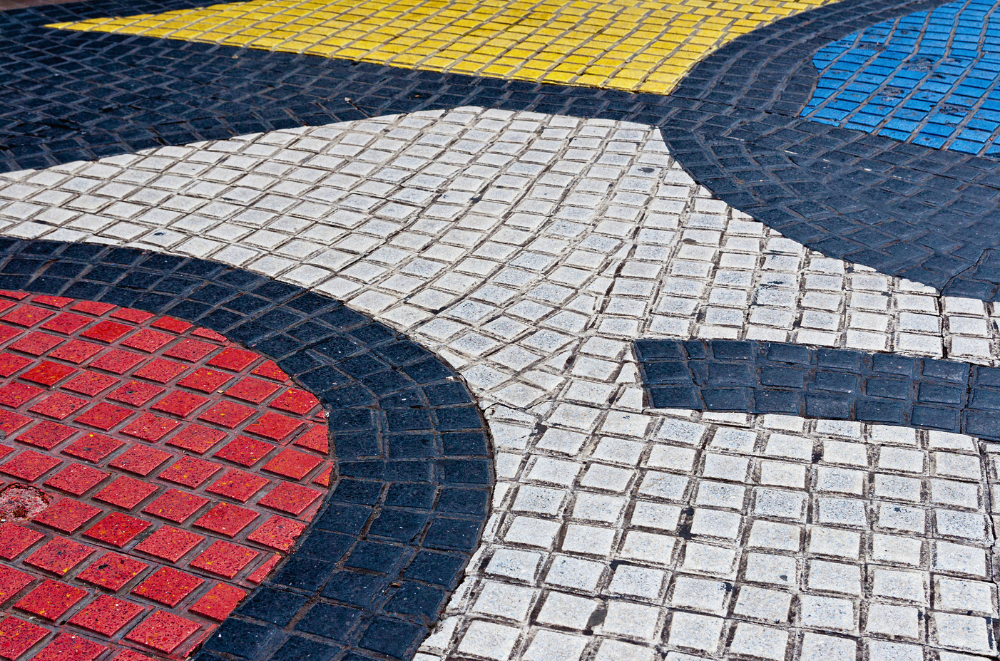
Centre d’Art Santa Mònica
Housed in a former convent, this contemporary art center represents Barcelona’s blend of historic architecture and modern culture. The center hosts rotating exhibitions featuring emerging local artists, offering visitors a glimpse into the city’s vibrant contemporary art scene. Don’t miss the rooftop terrace, which provides unique views of Las Ramblas and the nearby port. Open Tue-Sat, 11:00 AM – 9:00 PM; Sun, 11:00 AM – 5:00 PM. Free entry.
Palau Güell
Just off Las Ramblas, this early masterpiece by Antoni Gaudí showcases the architect’s evolving style. Built for his patron Eusebi Güell, the palace features innovative use of space, light, and materials. From the intricate ironwork to the fanciful rooftop chimneys, Palau Güell offers a fascinating look at Gaudí’s developing genius and the opulent lifestyle of 19th-century Barcelona’s elite. Open Tue-Sun, 10:00 AM – 5:30 PM. Tickets €12 for adults.
Barri Gòtic (Gothic Quarter)
The historic center of Barcelona, characterized by narrow medieval streets, Gothic architecture, and hidden squares. Many tourists consider Barri Gòtic to be one of the best places to visit in Barcelona.
Barcelona Cathedral
This stunning Gothic cathedral, officially the Cathedral of the Holy Cross and Saint Eulalia, is the heart of Barcelona’s old city. Its soaring spires and intricate façade dominate the skyline of the Gothic Quarter. Inside, the vaulted ceilings and ornate chapels create an atmosphere of medieval grandeur, while the peaceful cloister with its resident geese offers a tranquil retreat from the bustling city streets. Open daily, hours vary. Basic entry is free; rooftop access €3

Roman Temple of Augustus
Hidden away in the maze of the Gothic Quarter, these four remaining columns of a 1st-century BC Roman temple offer a fascinating glimpse into Barcelona’s ancient past. Standing about 9 meters tall, they’re a testament to the city’s 2000-year history and the layers of civilizations that have shaped it. This often-overlooked site provides a unique contrast to the medieval architecture that surrounds it. Accessible 24/7. Free to visit.

Plaça Reial
This elegant 19th-century square, just off Las Ramblas, is one of Barcelona’s most beautiful gathering places. Surrounded by neoclassical buildings with arcaded walkways, it’s home to palm trees, a central fountain, and ornate lampposts designed by a young Antoni Gaudí. By day, it’s perfect for people-watching from a café terrace; by night, it comes alive with the energy of Barcelona’s vibrant nightlife. Accessible 24/7. Free to visit.

Basilica of Santa Maria del Mar
Often called the “Cathedral of the Sea,” this stunning example of Catalan Gothic architecture is a testament to medieval Barcelona’s seafaring and commercial prowess. Its spacious interior, with soaring octagonal columns and large stained-glass windows, creates a sense of harmony and spiritual peace. The church has gained renewed fame as the setting for Ildefonso Falcones’ bestselling novel “Cathedral of the Sea.” Open daily, hours vary. Basic entry is free.

Plaça de Sant Jaume
For centuries, this square has been the political heart of Barcelona. It’s home to the City Hall and the Palau de la Generalitat, seat of the Catalan government. Both buildings boast beautiful Gothic façades, though the City Hall’s was added in the 19th century. On Sundays, you might catch locals performing the sardana, the traditional Catalan dance, in front of the City Hall, embodying the square’s role as a center of Catalan identity. Accessible 24/7. Free to visit.

MUHBA Plaça del Rei
The Barcelona City History Museum at Plaça del Rei offers a journey through the city’s past, from Roman times to the medieval period. Built over extensive Roman ruins, which visitors can explore in underground galleries, the complex includes the vast Gothic Saló del Tinell and the 14th-century watchtower. It’s a must-visit for history enthusiasts, offering a tangible connection to Barcelona’s rich and layered past. Open Tue-Sat, 10:00 AM – 7:00 PM; Sun, 10:00 AM – 8:00 PM. Tickets €7 for adults.

Pont del Bisbe (Bishop’s Bridge)
The Barcelona City History Museum at Plaça del Rei offers a journey through the city’s past, from Roman times to the medieval period. Built over extensive Roman ruins, which visitors can explore in underground galleries, the complex includes the vast Gothic Saló del Tinell and the 14th-century watchtower. It’s a must-visit for history enthusiasts, offering a tangible connection to Barcelona’s rich and layered past. Open Tue-Sat, 10:00 AM – 7:00 PM; Sun, 10:00 AM – 8:00 PM. Tickets €7 for adults.

El Call (Jewish Quarter)
This small network of narrow streets was once home to Barcelona’s Jewish community. While little remains of its Jewish heritage, the area retains its medieval charm with winding alleys and historic buildings. The MUHBA El Call museum offers insights into the life of medieval Barcelona’s Jewish community. The quarter is centered around Carrer de Sant Domènec del Call, where you can still see some Hebrew inscriptions on the old stones. Accessible 24/7. Free to explore.
Plaça del Pi
This charming square is dominated by the Gothic church of Santa Maria del Pi, known for its massive rose window. The plaza hosts a weekly art market and is surrounded by quaint cafes and artisan shops. It’s a perfect spot to pause and soak in the atmosphere of old Barcelona, perhaps while enjoying a coffee or browsing local crafts. Santa Maria del Pi church: Open Mon-Sat 10:00 AM – 6:00 PM, Sun 10:00 AM – 2:00 PM. Free entry to main church, small fee for bell tower and museum.
Plaça de Sant Felip Neri
This secluded square, tucked away in the heart of the Gothic Quarter, offers a glimpse into Barcelona’s history. The baroque church façade still bears scars from bombing during the Spanish Civil War. The square’s tranquil atmosphere, accentuated by a central fountain and surrounding orange trees, belies its tragic past. It’s a place for quiet reflection away and one of the best places to visit in Barcelona for historical significance. Accessible 24/7. Free to visit.

El Born
A trendy neighborhood known for its fashionable boutiques, artisan workshops, and the iconic Santa Maria del Mar basilica.
Palau de la Música Catalana
This UNESCO World Heritage site is a masterpiece of Catalan Art Nouveau. Designed by Lluís Domènech i Montaner, it’s one of the most beautiful concert halls in the world. The building is a riot of color and detail, from the sculptural façade to the stained-glass skylight in the main concert hall. Attending a performance here is an unforgettable experience, immersing you in both musical and architectural splendor. Guided tours daily. Tickets from €20.

Santa Caterina Market
With its colorful roof, Santa Caterina Market is a perfect blend of traditional market and modern architecture. Renovated in 2005, it has become an iconic symbol of the Born district’s regeneration. Inside, you’ll find a wide variety of fresh produce and local products, as well as bars and restaurants where you can sample Catalan cuisine. The market’s history stretches back to the 13th century, with Roman artifacts discovered during renovation now on display. Open Mon-Sat, 7:30 AM – 3:30 PM. Free entry.
Parc de la Ciutadella
This oasis in the heart of the city was created for the 1888 Universal Exhibition, and is one of my favorite parks! It features a lake, museums, a zoo, and the Catalan Parliament building. Notable structures include the Castle of the Three Dragons and a monumental waterfall designed with input from a young Antoni Gaudí. It’s a popular spot for picnics, rowing on the lake, or simply relaxing, offering a green respite from the urban bustle.

Barcelona Zoo
Located in Parc de la Ciutadella, the zoo houses over 4,000 animals from 400 species. It offers exhibits, shows, and educational programs. Open daily from 10:00 AM, closing times vary seasonally. Adult tickets are around €21.40, with discounts for children and seniors.
Arc de Triomf
Built as the main entrance for the 1888 Barcelona World Fair, this distinctive reddish brick archway stands at the end of a wide promenade leading to Parc de la Ciutadella. Unlike many triumphal arches, Barcelona’s is built in the Mudéjar style and adorned with stone sculptures representing Barcelona welcoming nations and the city’s progress. The promenade is a popular spot for skateboarders, street performers, and markets. Accessible 24/7. Free to visit.

Born Cultural Center
Housed in an impressive 19th-century iron market structure, the Born Cultural Center is built atop the exceptionally well-preserved ruins of the La Ribera district, destroyed after the 1714 Siege of Barcelona. It offers a unique glimpse into 18th-century Barcelona through its archaeological site, which visitors can view from elevated walkways. Beyond its historical significance, it hosts temporary exhibitions and cultural events, bridging Barcelona’s past and present. Open Tue-Sun, 10:00 AM – 8:00 PM. Free entry.
El Raval
A diverse area shaped by waves of immigration, El Raval houses contemporary art museums and a lively nightlife scene. Its multicultural character is evident in its varied eateries and shops. However, the neighborhood has struggled with issues of overcrowding, petty crime, and drug-related activities. Despite ongoing urban renewal efforts, visitors should remain vigilant, especially at night.
Tip: Stick to well-lit main streets, be aware of your surroundings, and avoid wandering into unfamiliar side streets after dark.
MACBA (Barcelona Museum of Contemporary Art)
Designed by American architect Richard Meier, the museum has become a symbol of Barcelona’s commitment to contemporary art since its opening in 1995. Its collection focuses on post-1945 Catalan and Spanish art, but also includes works by international artists. The plaza in front, popular with skateboarders, has become an iconic Barcelona spot in its own right. Open Mon, Wed-Fri, 11:00 AM – 7:30 PM; Sat, 10:00 AM – 8:00 PM; Sun, 10:00 AM – 3:00 PM. Tickets €11 for adults.
La Rambla del Raval
This wide, palm-lined boulevard is the result of an urban renewal project in the Raval neighborhood. At its center sits “El Gato de Botero,” a large cat sculpture by Colombian artist Fernando Botero, which has become a beloved local landmark. The Rambla is lined with bars, restaurants, and hotels, reflecting the multicultural nature of the Raval. It offers a less touristy alternative to the more famous Las Ramblas. Accessible 24/7. Free to visit.

Sant Pau del Camp
This Romanesque church, with parts dating back to the 10th century, is the oldest in Barcelona. Its simple exterior belies a beautiful interior featuring horseshoe arches and intricate stone carvings. The peaceful cloister, though small, is one of the finest examples of Romanesque architecture in Catalonia. Often overlooked by tourists, Sant Pau del Camp offers a quiet, contemplative space and a glimpse into Barcelona’s medieval past. Open Mon-Sat, 10:00 AM – 1:00 PM and 4:00 PM – 7:00 PM. Entry €3.
Eixample
A modernist district known for its unique octagonal blocks and iconic Gaudí masterpieces. Eixample displays Barcelona’s urban expansion with wide avenues, elegant buildings, and a perfect blend of residential and commercial spaces.
Sagrada Família
Antoni Gaudí’s unfinished masterpiece, the Sagrada Família, is Barcelona’s most iconic landmark. This awe-inspiring basilica, under construction since 1882, blends Gothic and Art Nouveau forms in a unique, organic style. Its intricate façades tell the story of Christ’s life, while the interior forest of tree-like columns creates an otherworldly atmosphere. As it nears completion (2026), the Sagrada Família continues to inspire and amaze visitors from around the world. Open daily, hours vary seasonally. Tickets from €26 for adults, advance booking recommended.

Casa Batlló
This Gaudí-designed house is a fantastical embodiment of Catalan Modernism. Its façade, covered in colorful trencadís (broken ceramic pieces) and rippling stone, reminds a dragon’s back. Inside, sinuous wood forms, ingenious light wells, and integrated furnishings showcase Gaudí’s imagination and attention to detail. A visit to Casa Batlló is like stepping into a fairytale, offering insight into the architect’s unique vision. Open daily, 9:00 AM – 8:00 PM. Tickets from €25 for adults.

Casa Milà (La Pedrera)
Another Gaudí marvel, Casa Milà is famous for its undulating stone façade and twisted iron balconies. Nicknamed “La Pedrera” (the stone quarry), it pushes the boundaries of conventional architecture. The real highlight is the roof terrace, with its iconic chimneys resembling helmeted warriors. At night, audiovisual shows bring these sculptural forms to life, offering a magical experience of Gaudí’s work. Open daily, 9:00 AM – 8:30 PM (until 9:00 PM in summer). Tickets from €28 for adults.

Passeig de Gràcia
This elegant boulevard is Barcelona’s most luxurious shopping street and one of the main places to visit in Barcelona. Besides Gaudí’s Casa Batlló and Casa Milà, it features notable buildings like Casa Amatller and Casa Lleó Morera, forming the “Block of Discord.” With its wide sidewalks, upscale boutiques, and outdoor cafés, Passeig de Gràcia offers a perfect blend of architectural sightseeing and high-end shopping. Accessible 24/7. Free to visit.
Hospital de Sant Pau
This Art Nouveau complex, designed by Lluís Domènech i Montaner, is a UNESCO World Heritage site. Originally a functioning hospital, it’s now a cultural center. The site features vibrant pavilions linked by underground tunnels, all situated within stunning gardens. Its blend of art and functionality shows the ideals of Modernisme, offering visitors a less crowded alternative to Gaudí’s more famous works. Open Mon-Sat, 9:30 AM – 4:30 PM; Sun, 9:30 AM – 2:30 PM. Tickets €15 for adults.

Casa de les Punxes
Also known as Casa Terradas, this striking modernist building resembles a medieval castle with its pointed turrets (punxes in Catalan). Designed by Josep Puig i Cadafalch, it stands at the intersection of three streets in the Eixample. Recently opened to the public, it offers guided tours that reveal its rich symbolism and architectural details. Open daily, 10:00 AM – 8:00 PM. Tickets from €13.50 for adults.

Gràcia
Once an independent town, Gràcia retains its village-like charm with narrow streets, artisanal shops, and bohemian cafes. Known for its vibrant community life, this neighborhood is one of the best places to visit in Barcelona if you’re looking for a more relaxed and authentic experience away from the tourist crowds.
Casa Vicens
Gaudí’s first important commission, Casa Vicens displays the architect’s early style, blending Moorish and Oriental influences with the use of natural motifs. Recently opened to the public, this summer house built for a tile manufacturer features colorful ceramic tiles, sgraffito, and innovative ironwork. It offers visitors a chance to see the origins of Gaudí’s unique architectural language. Open daily, hours vary seasonally. Tickets from €16 for adults.

Plaça de la Vila de Gràcia
This charming square is the heart of the Gràcia neighborhood, known for its village-like atmosphere. Dominated by a clock tower, the square is surrounded by cafés and is a popular gathering place for locals. During the Festa Major de Gràcia in August, it becomes the center of elaborate street decorations and lively celebrations, embodying the neighborhood’s strong community spirit. Accessible 24/7. Free to visit.
El Carmel
Park Güell
This colorful park is one of Gaudí’s most playful and ambitious works. Originally conceived as a housing development, it became a public park featuring Gaudí’s distinctive architectural style. From the iconic lizard fountain to the sweeping terrace with its undulating bench covered in trencadís, Park Güell is a joyful expression of Gaudí’s imagination. It also offers panoramic views of Barcelona, making it a must-visit for both Gaudí enthusiasts and those seeking spectacular cityscapes. Open daily, hours vary seasonally. Tickets €10 for adults, advance booking recommended.

Carmel del Bunkers
Locals consider this urban mountain to be one of the best places to visit in Barcelona. A hilltop viewpoint offering breathtaking 360-degree views of Barcelona, featuring old Spanish Civil War bunkers and popular among locals for picnics and sunsets. Open Monday to Friday, 9 AM to 7:30 PM. Closed on weekends. Free to visit.

Tibidabo
Tibidabo Amusement Park
Sitting on top of the Tibidabo mountain, this historic amusement park offers a unique blend of nostalgia and thrills. Dating back to 1901, it features a mix of vintage and modern rides, including a famous Ferris wheel. The park’s highlight, however, is the breathtaking view it offers of Barcelona and the Mediterranean. Open seasonally, hours vary. Tickets from €28.50 for adults.

Temple of the Sacred Heart of Jesus
Visible from almost anywhere in Barcelona, the Temple of the Sacred Heart of Jesus dominates Tibidabo’s summit alongside the amusement park. Built between 1902 and 1961, its soaring spires and statue of Christ create an iconic silhouette that’s become a defining feature of the city’s skyline. The church’s blend of styles, from Romanesque to Art Nouveau, reflects its long construction period. Entrance to the crypt and terrace: €4 for adults

Montjuïc
A historic hill overlooking Barcelona’s harbor, home to museums, gardens, Olympic facilities, and a castle, offering cultural attractions. It’s one of the best places to visit in Barcelona for stunning city views.

Montjuïc Castle
This hilltop fortress, with a history dating back to the 17th century, offers sweeping views of the city and harbor. Once a symbol of repression, it now houses a military museum and hosts cultural events. The castle’s ramparts provide a perfect vantage point for watching ships enter and leave the port, while its gardens offer a peaceful retreat from the city below. Open daily, 10:00 AM – 8:00 PM (March-October), 10:00 AM – 6:00 PM (November-February). Tickets €5 for adults.
Free admission: Every Sunday from 3:00 PM to closing time, and all day on the first Sunday of each month.

Fundació Joan Miró
Dedicated to the famous Catalan surrealist artist, this striking white building houses the largest collection of Joan Miró’s works. The museum, designed by Josep Lluís Sert, is a work of art in itself, with its integration of light and space complementing Miró’s colorful, whimsical creations. It offers visitors a comprehensive look at the artist’s evolution and his significant contribution to 20th-century art. Open Tue-Sat, 10:00 AM – 6:00 PM (until 8:00 PM in summer); Sun, 10:00 AM – 3:00 PM. Tickets €13 for adults.
Poble Espanyol
This open-air museum, built for the 1929 International Exhibition, showcases the architecture, craftsmanship, and culture of Spain. Featuring 117 buildings representing different regions of Spain, it offers visitors a chance to “tour” the country in a single afternoon. With artisan workshops, restaurants serving traditional cuisine, and cultural performances, Poble Espanyol provides an immersive experience of Spain’s diverse heritage. Tickets from €14 for adults.
Montjuïc’s gardens
Montjuïc’s gardens provide a peaceful escape from Barcelona’s urban landscape, offering a diverse array of flora and spectacular city views
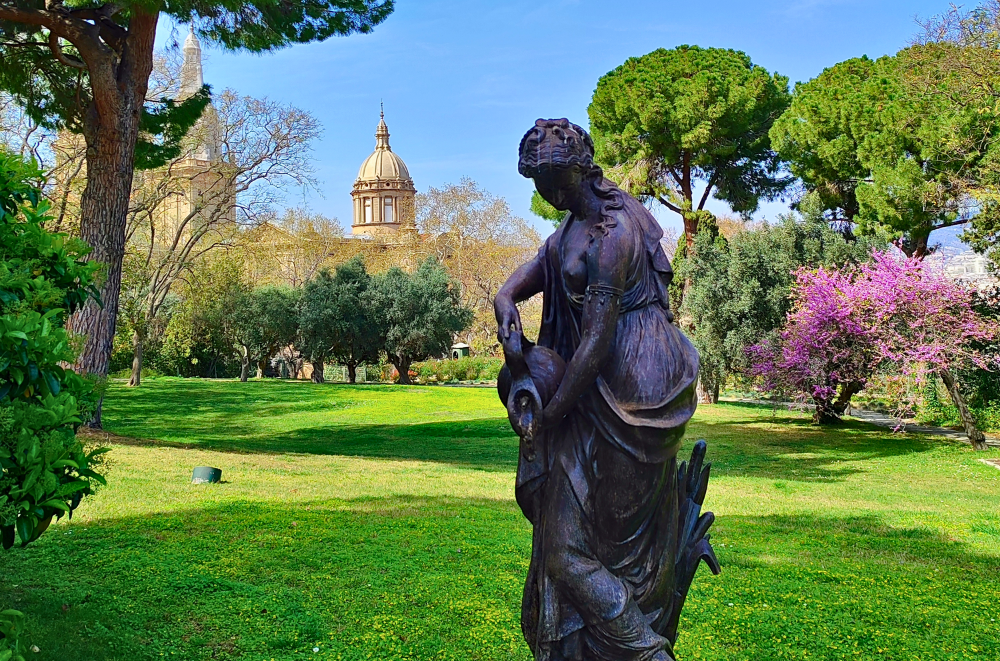
Jardí Botànic
This modern botanical garden showcases Mediterranean flora from around the world. Its striking terraced design offers beautiful views over the city.
Jardins de Laribal
These romantic gardens feature cascading terraces, fountains, and winding paths. Don’t miss the famous “Font del Gat” (Cat Fountain) hidden within.
Jardins de Mossèn Costa i Llobera
One of the best places to visit in Barcelona for botanical enthusiasts – Specializing in cacti and succulents, this unique garden on Montjuïc’s steep slopes has over 800 species. Its location offers stunning views of Barcelona’s port.
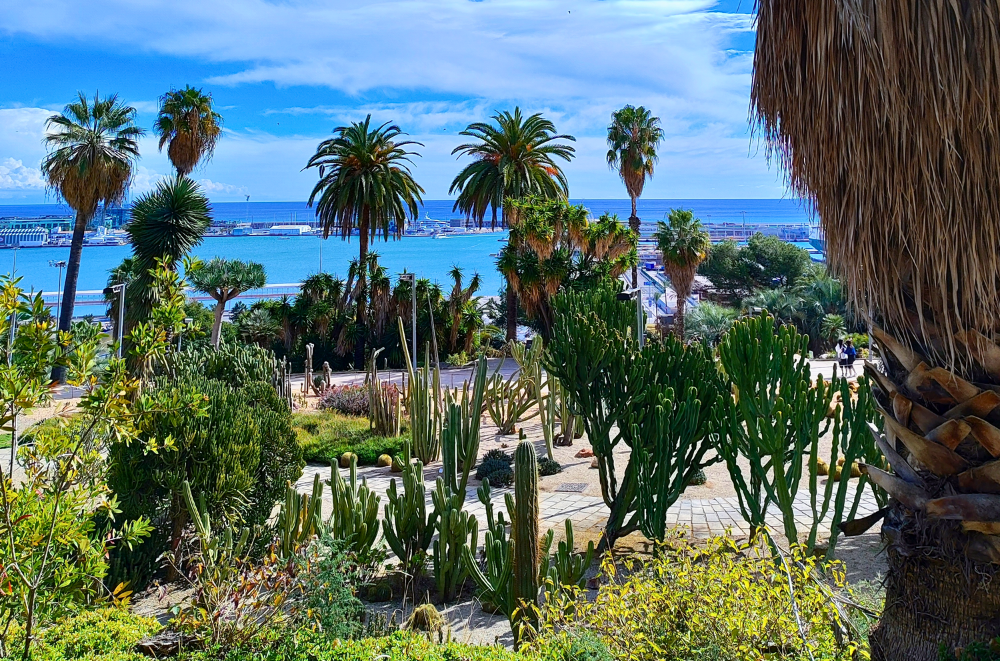
Jardins de Joan Maragall
Elegant formal gardens surrounding the Albéniz Palace. Features neoclassical fountains, sculptures, and well-manicured lawns. Open weekends only.
1929 World Expo Fairgrounds and Nearby
The 1929 World Expo Fairgrounds, originally built for the International Exposition, transformed Montjuïc hill, offering a compact journey through the city’s 20th-century architectural and artistic evolution.
Magic Fountain of Montjuïc
This spectacular fountain, built for the 1929 International Exhibition, has long been an attraction with its shows of water, light, and music. However, due to severe drought conditions, the fountain is currently shut down as part of Barcelona’s water-saving measures. This closure, along with other fountains on the Maria Cristina axis, is a stark reminder of the environmental challenges facing the city. While visitors can still admire the fountain’s structure, its famous displays are on hold until water conditions improve.
Museu Nacional d’Art de Catalunya (MNAC)
Housed in the majestic Palau Nacional, MNAC enjoys an impressive collection spanning 1000 years of Catalan art. From Romanesque church frescoes to Gothic altarpieces, Modernist paintings to Art Nouveau furniture, the museum offers a comprehensive view of Catalan artistic heritage. The building itself, with its imposing dome and cascading steps, provides a grand setting for this cultural treasure trove. Tickets €12 for adults, free admission first Sunday of each month and every Saturday from 3:00 PM.
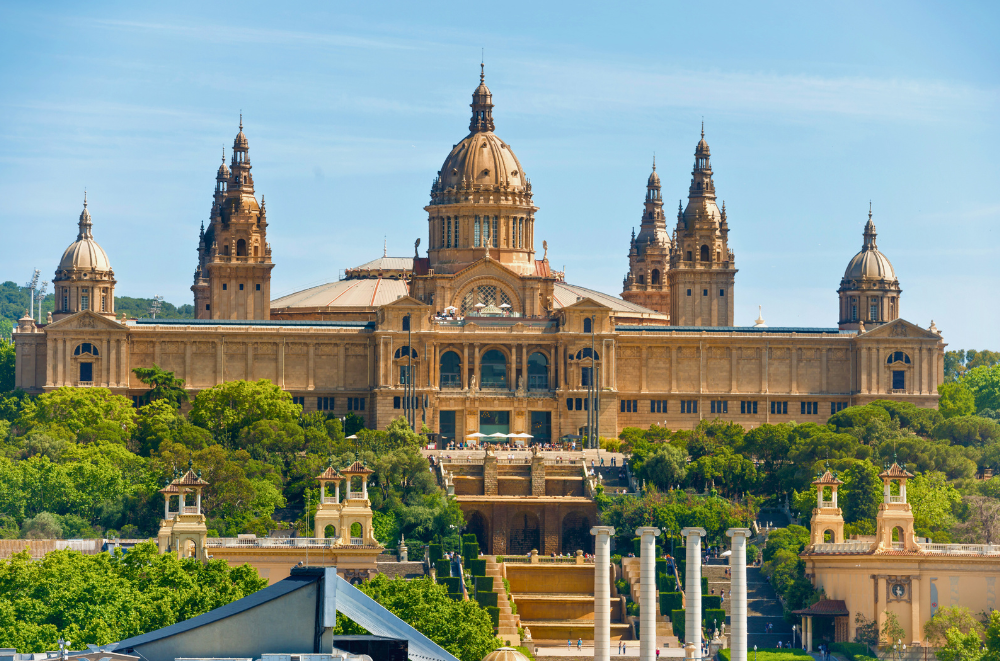
The Olympic Ring
A complex of sports facilities built for the 1992 Olympics, including the iconic Olympic Stadium, Palau Sant Jordi, and the striking telecommunications tower designed by Santiago Calatrava. This area symbolizes Barcelona’s successful Olympic legacy and continues to host major sporting and cultural events.
Beaches and Other City Areas
Barceloneta Beach
This popular city beach, significantly expanded for the 1992 Olympics, features golden sand and a vibrant promenade. Once a traditional fishing neighborhood, Barceloneta now buzzes with beachgoers, street performers, and outdoor cafés, offering a perfect slice of Mediterranean life right in the city. If you love the sea, this is easily one of the best places to visit in Barcelona.
Accessible 24/7. Free to visit. Lifeguards on duty during summer months.

Port Vell
Once a neglected harbor, Port Vell has transformed into a vibrant waterfront destination. Stroll along the wooden Rambla de Mar bridge for panoramic views of yachts and historic buildings. Dive into marine wonders at Europe’s largest aquarium, or browse shops at the Maremagnum shopping center.
Laberint d’Horta
Best places to visit in Barcelona for romantic strolls? I’ve got you covered! This hidden gem in the Horta-Guinardó district, features a stunning hedge maze and neoclassical terraces. Dating back to the 18th century, it’s Barcelona’s oldest garden and offers a peaceful escape from the urban bustle. The park includes romantic gardens, mythological sculptures, and picturesque pavilions. Admission: €2.23 for adults, free on Wednesdays and Sundays.

Picasso Museum
Housed in five medieval palaces, the Picasso Museum showcases one of the most extensive collections of the iconic artist’s work. With over 4,000 pieces, it offers a comprehensive journey through Picasso’s formative years and his deep connection to Barcelona. The museum’s highlights include the complete Las Meninas series and an impressive collection of early works. The Gothic architecture of the buildings provides a striking contrast to Picasso’s revolutionary art, creating a uniquely Barcelona experience. Open Tue-Sun, 10:00 AM – 8:00 PM (closed Mondays). Tickets €12 for adults, free admission on Thursday afternoons and first Sunday of each month.
Spotify Camp Nou
Home to FC Barcelona, one of the world’s most famous football clubs, Camp Nou is one of the best places to visit in Barcelona if you’re a football fan. As Europe’s largest stadium, it offers an impressive atmosphere on match days. The Camp Nou Experience tour allows visitors to explore the stadium, including the team’s changing rooms and the pitch itself, and visit the FC Barcelona Museum, displaying the club’s rich history and numerous trophies. Stadium tours available daily 10:00 AM – 6:30 PM (may vary on match days). Tickets from €26 for adults.

Torre Glòries
Formerly known as Torre Agbar, this 38-story tower has become one of the most recognizable elements of Barcelona’s skyline. Designed by Jean Nouvel, its bullet-like shape is covered in aluminum plates and over 4,500 LED devices, creating spectacular illuminations at night. While not open to the public, the tower serves as a striking landmark and a symbol of modern Barcelona.

Parc del Fòrum
This large urban park, created for the 2004 Universal Forum of Cultures, features modern architectural elements and open spaces. It includes a marina, beach pool, and large esplanades used for concerts and events. Open 24/7 for general access. Free entry.
CosmoCaixa
This cutting-edge science museum offers an interactive and immersive exploration of the natural world. Highlights include a flooded Amazon rainforest, a geological wall, and a planetarium. Open daily, 10:00 AM – 8:00 PM. Tickets €6 for adults, free for children under 16.
Barcelona Mountain Hikes
If you seek some fresh air and amazing views, this is one of the best places to visit in Barcelona. The city’s surrounding mountains offer a perfect escape into nature with stunning city and sea views. These hikes have a refreshing contrast to urban exploration. Always check trail conditions and bring appropriate gear.
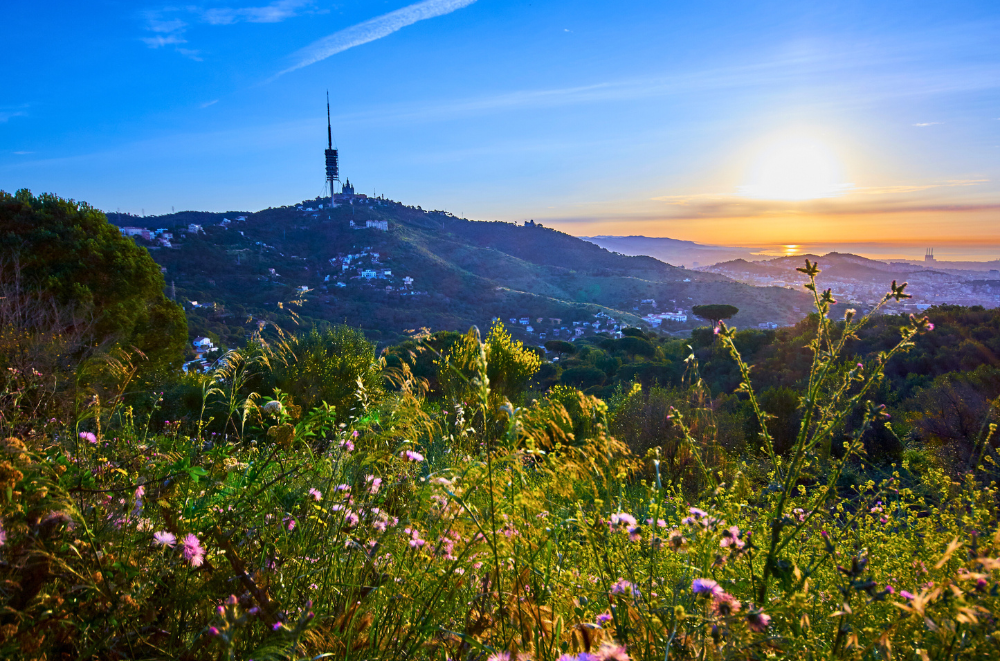
What to Eat in Barcelona
Barcelona’s culinary scene is a delightful mix of traditional Catalan cuisine and innovative modern gastronomy. When exploring Barcelona’s food scene, don’t miss out on trying paella, the iconic Spanish rice dish that, while originally from Valencia, is expertly prepared in Barcelona with fresh seafood. For a unique twist, try fideuà, a noodle-based variation often served with alioli. Escalivada, a dish of smoky grilled vegetables, typically eggplant and red peppers, showcases the Catalan love for simple, flavorful ingredients.

For a refreshing option, especially in summer, try esqueixada, a salad of shredded salt cod, tomatoes, and onions. Satisfy your sweet tooth with crema catalana, the Catalan version of crème brûlée. And don’t forget to start your day with the quintessential Catalan breakfast: pa amb tomàquet, a simple yet delicious bread rubbed with tomato and olive oil.
Best Cafes and Restaurants in Barcelona
Fine Dining
- Tickets: Innovative tapas by the Adrià brothers
- Lasarte: Three-Michelin-starred restaurant by Martín Berasategui
- Enigma: Avant-garde cuisine in a futuristic setting
Casual Dining
- La Pepita: Cozy neighborhood restaurant in Gràcia serving creative tapas in a relaxed atmosphere
- El Nacional: Multi-space culinary experience with various restaurants
- La Pepita: Creative tapas in a cozy setting
Traditional Tapas Bars
- El Xampanyet: Classic cava and tapas bar in El Born
- Quimet & Quimet: Standing-room-only bar known for montaditos
- Bar Cañete: Upscale tapas bar with a lively atmosphere

Modern Tapas and Fusion
- Dos Palillos: Asian-inspired tapas by ex-El Bulli chef
- Suculent: Creative tapas with a modern twist
- Dos Pebrots: Historical gastronomy in a contemporary setting
Cafes and Bakeries
- Escribà: Historic pastry shop famous for their cakes and chocolates
- Hofmann Pastisseria: Known for their spectacular croissants
- Satan’s Coffee Corner: Excellent coffee and brunch options
Dining by District
Each neighborhood in Barcelona offers its own unique culinary experiences. Here are some highlights:
Gothic Quarter
- Els Quatre Gats: Historic modernist café once frequented by Picasso
- La Boqueria Market: Various stalls offering fresh local cuisine
El Born
- Cal Pep: Legendary tapas bar with counter seating
- Bastaix: Farm-to-table Catalan cuisine in a cozy setting
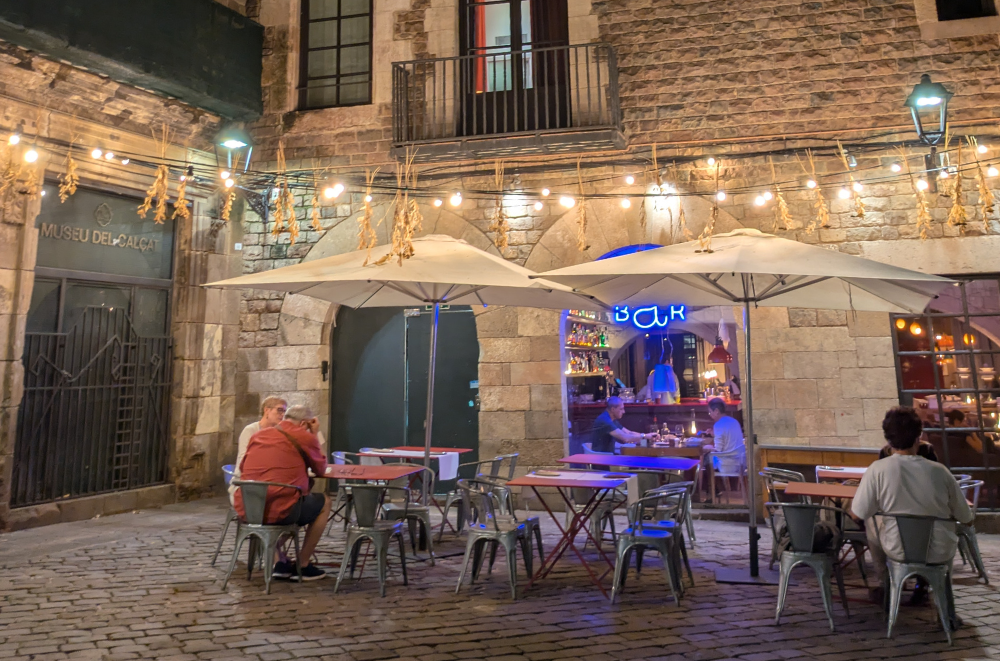
Eixample
- Moments: Two-Michelin-starred restaurant in the Mandarin Oriental
- Gelaaati di Marco: Artisanal gelato shop
Gràcia
- La Pepita: Creative tapas in a cozy setting
- Rooftop Smokehouse: American-style barbecue with a Catalan twist
Barceloneta
- Can Majó: Traditional seafood restaurant near the beach
- La Cova Fumada: No-frills bar famous for inventing the bomba
Where to Sleep in Barcelona
Barcelona offers a wide range of accommodation options to suit every taste and budget. From luxury hotels with rooftop pools to cozy hostels in historic buildings, you’ll find the perfect place to rest after a day of exploring.
Luxury
- Hotel Arts Barcelona: Beachfront skyscraper with stunning views and a two-Michelin-starred restaurant
- Mandarin Oriental, Barcelona: Elegant hotel on Passeig de Gràcia with a rooftop pool
- W Barcelona: Iconic sail-shaped hotel on the beach with modern amenities. One of the best places to visit in Barcelona, if you’re looking for a luxurious stay

Mid-range
- Hotel 1898: Colonial-style hotel on Las Ramblas with a rooftop pool
- H10 Casa Mimosa: Boutique hotel in a modernist building near Casa Milà
- Yurbban Passage Hotel & Spa: Stylish hotel with local character in El Born
Budget
- Generator Barcelona: Modern hostel with private rooms and a rooftop terrace
- Casa Gracia: Boutique hostel in a modernist building in Gràcia
- Hostal Grau: Eco-friendly guesthouse in the heart of the city
Unique
- Casa Camper: Designer hotel with free 24-hour snack bar
- Praktik Rambla: Boutique hotel in a restored 19th-century building
- Margot House: Intimate 9-room hotel inspired by Wes Anderson’s aesthetics
Nightlife in Barcelona
Barcelona comes alive at night, offering a diverse range of experiences, including trendy bars, lively clubs, and cozy cafes along its bustling streets.
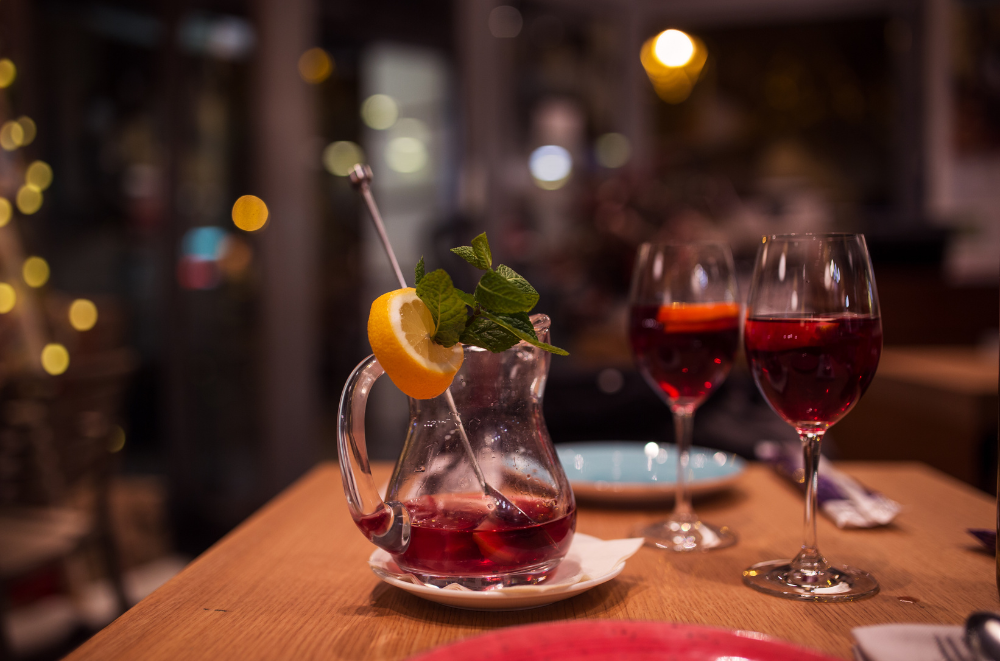
Best areas for nightlife
- El Born: Trendy bars and cocktail lounges
- Raval: Eclectic mix of bars and clubs
- Gràcia: Local favorite for laid-back drinks
Popular clubs and bars
- Razzmatazz: Multi-room club featuring various music styles
- Opium: Beachfront club with a terrace overlooking the Mediterranean
- Dry Martini: Classic cocktail bar known for its martinis
Live music venues
- Jamboree: Historic jazz club in Plaça Reial
- Sala Apolo: Iconic venue hosting diverse music acts
- Sidecar: Intimate rock club in the Gothic Quarter
Flamenco shows
- Tablao Cordobés: Traditional flamenco in an intimate setting
- Palau Dalmases: Flamenco performances in a baroque palace
Places to Visit in Barcelona: Day Trips and Beyond
Barcelona’s prime location allows for numerous exciting day trips. Here are some of the best options:
Montserrat
Just an hour from Barcelona, this stunning mountain range is home to a Benedictine monastery. Take the cable car for breathtaking views and hear the famous boys’ choir perform. How to get there: Train from Plaça Espanya (1 hour)
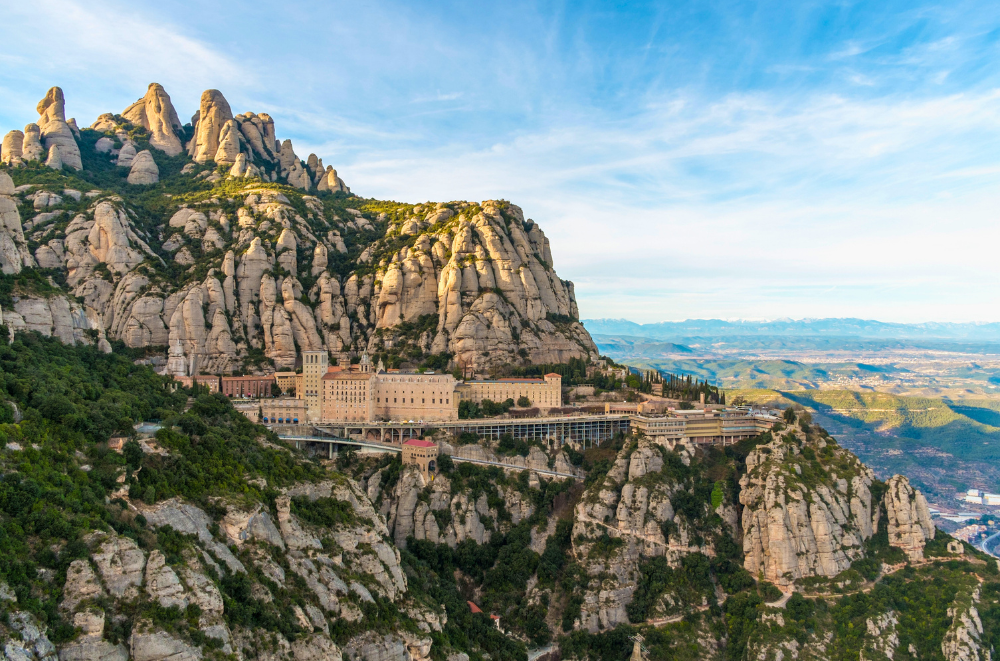
Girona and Figueres
Combine medieval charm with surrealist art. Explore Girona’s well-preserved Jewish Quarter, Arab baths and cathedral, then visit the Dalí Theatre-Museum in Figueres. How to get there: High-speed train from Barcelona Sants (38 minutes to Girona, 55 minutes to Figueres)
Sitges
This picturesque coastal town is known for its beaches, seafront promenade, and vibrant cultural scene. How to get there: Train from Barcelona Sants (35 minutes)
Tossa de Mar
A beautiful Costa Brava town featuring a medieval walled old town and stunning beaches. How to get there: Bus from Barcelona Nord bus station (1 hour 30 minutes)

PortAventura World
In my opinion, this is Europe’s best theme park and definitely one of the best places to visit in Barcelona and its surroundings. It has amazing thrilling rides that you won’t forget.
How to get there: Train from Barcelona Sants to Port Aventura station (1 hour 15 minutes)
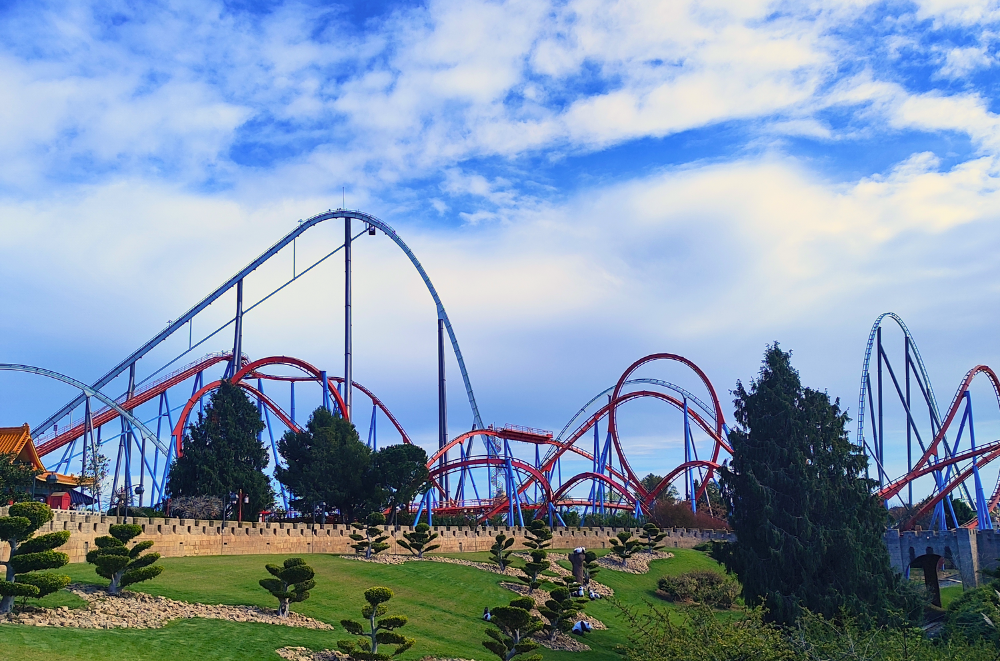
Cadaqués and Cap de Creus
Visit this charming whitewashed village that inspired Dalí, and explore the rugged beauty of Cap de Creus Natural Park. How to get there: Bus from Barcelona Nord bus station (2 hours 45 minutes)
Staying Safe: Tips for a Worry-Free Barcelona Visit
Barcelona is generally a safe city for tourists, but like any popular destination, it’s important to stay alert. While some of the best places to visit in Barcelona are truly mesmerizing, this is exactly the reason you should also be cautious. Here are some tips to ensure a smooth trip:
- Beware of pickpockets, especially in crowded tourist areas like Las Ramblas and on public transport.
- Keep valuables secure and out of sight. Consider using a money belt or hidden pouch.
- Avoid walking alone in poorly lit areas late at night, particularly in the Raval neighborhood.
- Use official taxis or licensed ride-sharing services.
- Be wary of common scams, such as the “friendship bracelet” trick or fake petitions.
- In case of emergency, dial 112 for police, fire, or medical assistance.
Remember, most visits to Barcelona are trouble-free. Stay aware of your surroundings, use common sense, and you’ll likely have a safe and enjoyable trip.
Q&A: Best Places to Visit in Barcelona – Everything You Need to Know
What are the must-see places to visit in Barcelona?
The top places to visit in Barcelona include the Sagrada Família, Park Güell, Casa Batlló, La Rambla, Gothic Quarter, and Casa Milà (La Pedrera). These iconic attractions show the city’s unique architecture, rich history, and vibrant culture.
When is the best time to visit Barcelona?
Spring (March to May) and fall (September to November) offer pleasant weather and fewer crowds, making them ideal for exploring the city’s attractions. These seasons provide comfortable temperatures for walking and sightseeing, as well as better rates on accommodations.
How safe is Barcelona for tourists?
Barcelona is generally safe, but tourists should be aware of pickpocketing in crowded areas and take standard precautions, especially at night. As with any major city, it’s important to stay vigilant and use common sense while enjoying your visit.
What safety measures should I take while visiting Barcelona?
Stay alert in tourist areas, keep valuables secure, use licensed taxis or ride-shares, and avoid walking alone in poorly lit areas at night. It’s also advisable to keep a copy of important documents separate from the originals and be wary of common scams targeting tourists.
Are there any specific neighborhoods in Barcelona to be cautious about?
While most areas are safe, exercise extra caution in El Raval at night and be aware of your surroundings in crowded tourist spots like Las Ramblas. These areas are known for higher rates of petty crime, so it’s important to be particularly vigilant here.
What are the best family-friendly places to visit in Barcelona?
Families can enjoy the Barcelona Zoo, CosmoCaixa science museum, Tibidabo Amusement Park, and the beach at Barceloneta. These attractions offer a mix of education, entertainment, and relaxation suitable for visitors of all ages.
Is Barcelona suitable for a trip with young children?
Yes, Barcelona offers many child-friendly attractions, parks, and beaches, making it an excellent destination for families. The city’s public transportation is also stroller-friendly, and many restaurants welcome children.
What are the top Gaudí attractions in Barcelona?
Don’t miss the Sagrada Família, Park Güell, Casa Batlló, and Casa Milà (La Pedrera) to experience Gaudí’s unique architecture. These masterpieces showcase the architect’s innovative designs and are essential places to visit in Barcelona for any architecture enthusiast.
How can I save money on attractions in Barcelona?
Consider purchasing the Barcelona Card or booking tickets online in advance for popular sites to save time and money. Many museums also offer free entry on certain days of the month, so check their websites for these opportunities.
What are the best beaches near Barcelona?
For the best beaches near Barcelona, consider Cala Bona and Platja de Treumal in Blanes, or Platja de Fenals in Lloret de Mar. These beaches offer a perfect blend of golden sands, clear waters, and natural beauty, all within easy reach of the city.
What is the best way to get around Barcelona?
The city has an excellent public transportation system, including metro, buses, and trams. Walking is also a great option in many central areas.
What are some unique places to visit in Barcelona off the beaten path?
Consider visiting the Bunkers del Carmel for panoramic views, exploring the El Born neighborhood, or wandering through the Laberint d’Horta park.
What are the must-try local dishes in Barcelona?
Don’t miss trying paella, fideuà, patatas bravas, and pa amb tomàquet (bread with tomato) while in Barcelona. For dessert, sample some crema catalana or indulge in fresh churros with chocolate.
Are there any day trips worth taking from Barcelona?
Popular day trips include visits to Montserrat, the Dalí Museum in Figueres, the coastal town of Sitges, and the medieval city of Girona.
What are the best places to visit in Barcelona for art lovers?
Art enthusiasts should visit the Picasso Museum, MACBA (Museum of Contemporary Art), and the National Museum of Art of Catalonia (MNAC). These world-class institutions house impressive collections spanning various periods and styles, and are some of the best places to visit in Barcelona.
How long should I plan to stay in Barcelona?
A 4-5 day trip allows you to see the major attractions, but a week or more is ideal to fully explore the city and take day trips.
What are the best areas to stay in Barcelona?
Popular neighborhoods for tourists include the Gothic Quarter, Eixample, El Born, and Gràcia, each offering a unique atmosphere and proximity to attractions.
Is it necessary to book tickets in advance for popular attractions?
If you want to catch the most important and interesting places to visit in Barcelona, it’s highly recommended to book tickets in advance for popular sites like the Sagrada Família and Park Güell – especially during peak season.
What are some budget-friendly places to visit in Barcelona?
Many of the city’s parks, beaches, and historic neighborhoods are free to explore, which makes them the perfect places to visit in Barcelona. Also, some museums offer free entry on certain days of the month.






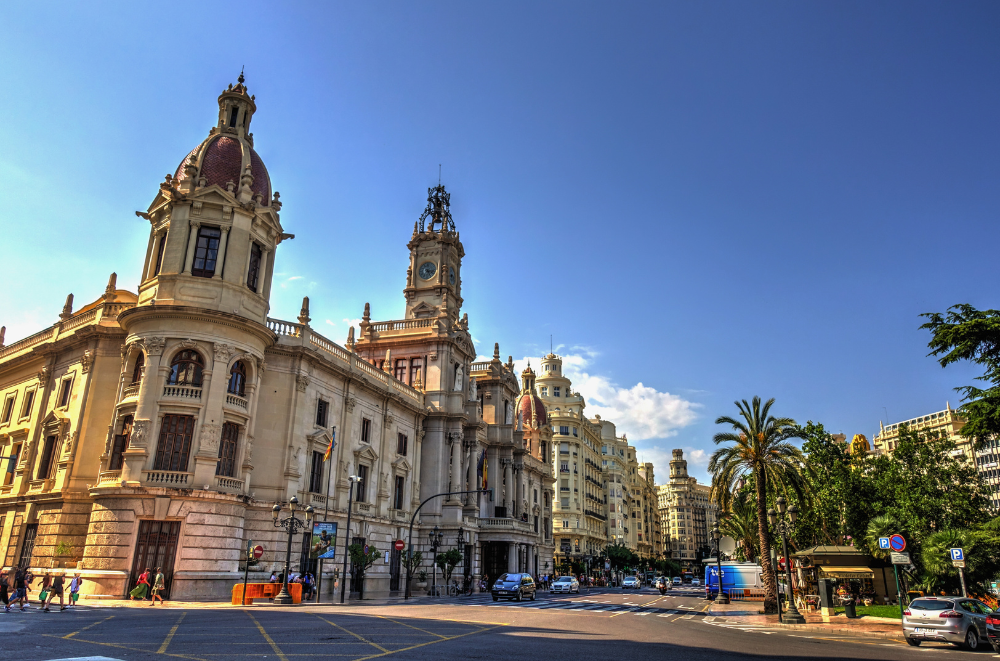

4 Responses
Great overview of Barcelona! Quick question: for someone who prefers less crowded spots, any hidden gems or neighborhoods you’d recommend checking out, especially outside peak tourist seasons?
Thanks! For less crowded spots, I’d definitely recommend checking out the Gràcia neighborhood – it has this amazing local vibe with small plazas, independent shops, and great tapas bars that most tourists miss. Jardins de Joan Maragall is another hidden gem that’s perfect for a peaceful stroll. If you’re looking for more off-the-beaten-path recommendations like these, I actually share tons of Barcelona hidden gems on my TikTok.
Nice guide on Barcelona! Could you tell if it’s better to use public transport or taxis to get around once there? Also, I found this site about prices in Spain https://world-prices.com/en/spain/prices but not sure how updated it is.
Thank you. Public transport beats taxis in Barcelona – much cheaper! But walking is actually the best way to see the city – you’ll discover amazing architecture and hidden gems you’d miss otherwise.